Updated October 16, 2025 08:57AM
If you think your recent Strava stats are impressive, go check out the recent uploads by Kilian Jornet.
Jornet just completed his crusade to climb all 72 accessible 14,000-foot-plus peaks in the lower 48 of the United States, and to ride his bike between them.
His 490-hour “States of Elevation” project took him from Colorado, through Utah, Nevada, California, all the way up to Washington. It spanned 31 consecutive days.
All told, the crazed Catalan traveled 5,100km (3,200 miles) and amassed more than 123,000m (400,000 feet) of gain. Some 4,100 of those kilometers (2,570 miles) were by bike.
On average, this superhero of endurance ran a marathon and rode a Tour de France stage every day for a month.
And sleep? Who needs it? Jornet got around four to six hours per night on a mattress in the back of his crew’s R.V.
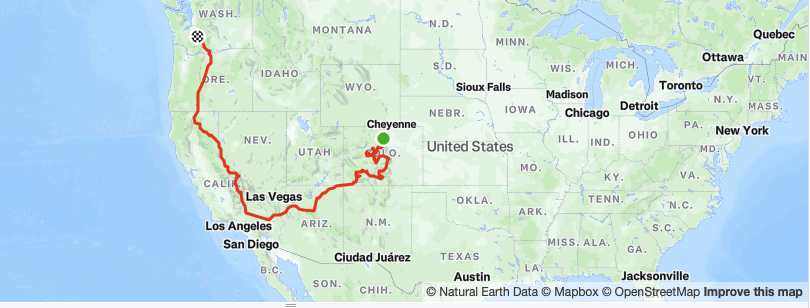
The total “States of Elevation” upload garnered some serious Strava swag.
It was an awe-inspiring feat of bloody-minded grit and endurance.
But be wary of taking inspiration from the 37-year-old’s training and nutrition strategies.
Jornet rolled out of Colorado for day 1 with no specific training. This mountain runner had ridden his bike outside “two or three times all year.”
He forwent high-carb and fueled with an olive-oil-based nutrition strategy that would make even the sternest stomachs turn.
Here’s how he got away with it.
The Pogačar-meets-Merckx of mountain athletics
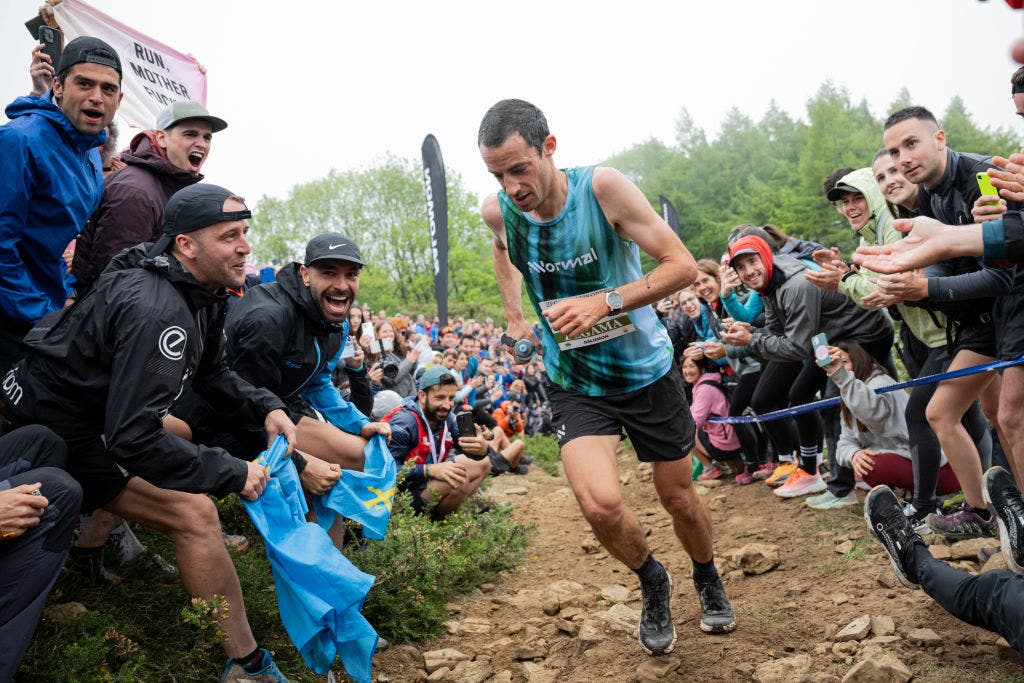 Jornet is multiple winner of Spain’s famous Zegama trail race. (Photo: Gari Garaialde/Getty Images )
Jornet is multiple winner of Spain’s famous Zegama trail race. (Photo: Gari Garaialde/Getty Images )
Wondering who the heck this crazy Kilian character is?
Well, he’s part man, part mountain goat.
Jornet grew up in a hut perched on top of the Pyrénées, climbed his first mountain at age 3, and hasn’t stopped summiting since.
He’s won the “triple crown” of ultra running – USA’s Western States 100 and Hardrock, and the Ultra Trail du Mont Blanc. He became the youngest ever winner of the latter in 2008 when he took the “W” at age 20.
Jornet’s also harvested the most prized “sub ultra” races, too, including Sierre-Zinal and Zegama-Aizkorri.
In short, he’s the Pogi of trail and ultra running, and the Merckx of mountain climbing.
The Catalan counts speed records on the world’s most notorious peaks, including a controversial double ascent of Everest without oxygen.
Beyond that, he’s a world champion ski-mountaineer, environmental campaigner, and owns the eco-friendly trail shoe company, NNormal.
Want to do a big bike challenge? Don’t do what Jornet did
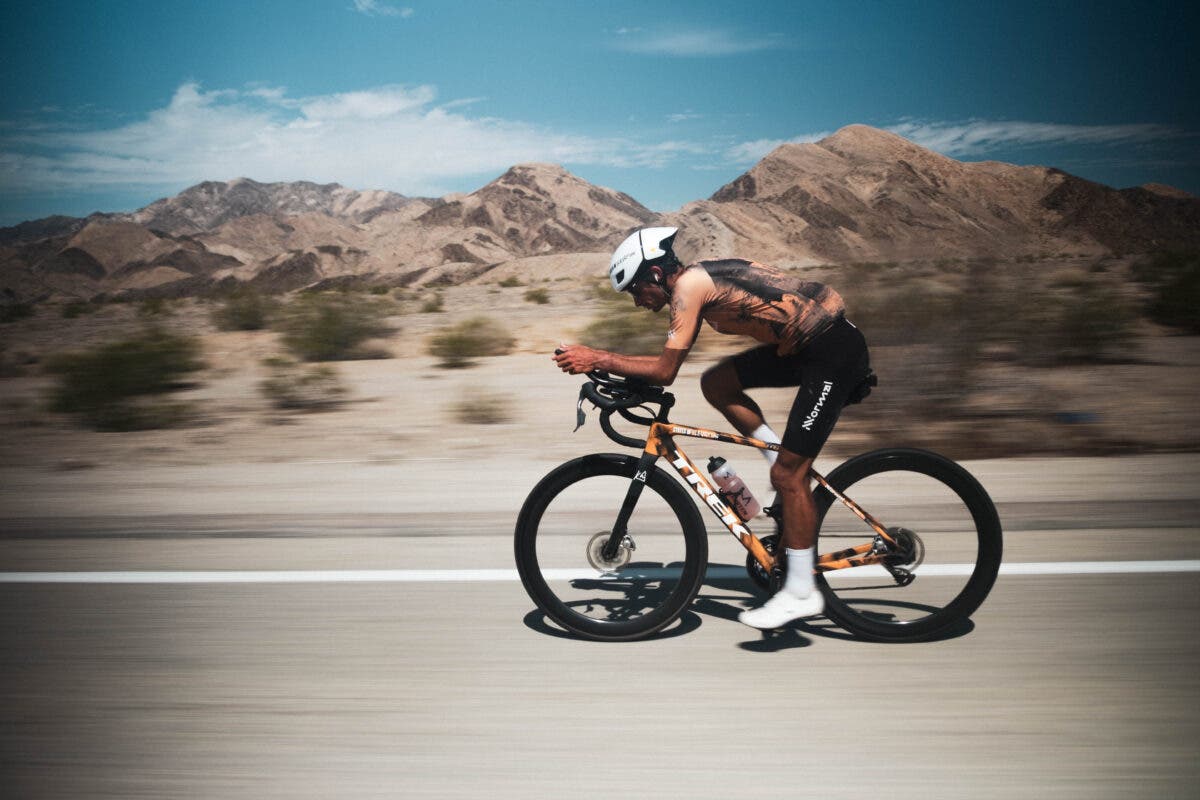 Jornet had barely ventured beyond the indoor trainer before his epic month-long adventure. (Photo: Nick Danielson – States of Elevation)
Jornet had barely ventured beyond the indoor trainer before his epic month-long adventure. (Photo: Nick Danielson – States of Elevation)
Jornet’s “States of Elevation” wasn’t his first near-unfathomable feat.
In 2023, he climbed 177 3,000-meter peaks in the Pyrénées in eight days. One summer later, he summited all 82 of the 4,000-meter mountains in the Alps in less than three weeks.
But Jornet’s 2025 traverse of the roof of the U.S. would test him to a whole new level.
Although Jornet has a history with the bike – he pedaled through sections of his Alpine project last summer, for example – he’d barely ventured beyond his indoor trainer all year.
It’s a proposition that would have a cycling coach shudder.
“I didn’t know how I’d feel or experience the bike rides,” Jornet said this week in a video recap. “I’ve never been on the bike that long.
“I train on the bike indoors for heat training or recovery,” Jornet said. “But this year I’d taken the bike out maybe two or three times before the trip. Then I was riding 200 miles a day in the desert with high temperatures and strong headwinds.
“But I really enjoyed it.”
The bikes Jornet rode on his insane adventure
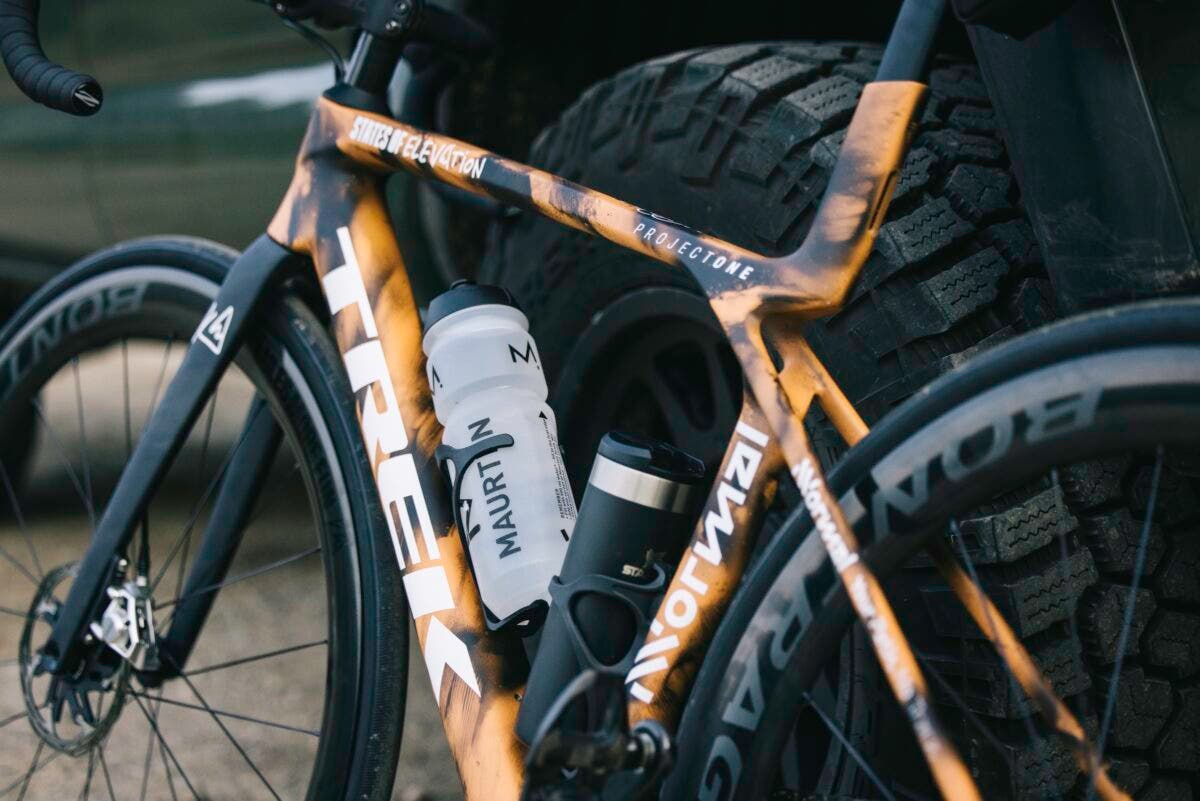 Jornet used a Trek Madone and Trek Checkpoint for his multi-surface adventure. (Photo: Nick Danielson — States of Elevation)
Jornet used a Trek Madone and Trek Checkpoint for his multi-surface adventure. (Photo: Nick Danielson — States of Elevation)
After riding a Wilier for his Alpine adventure last year, Jornet teamed up with Trek for his U.S. project.
The multi-surface course required a Madone road bike with clip-on aero bars, and a Checkpoint gravel bike. They were specced with SRAM RED groupsets and Bontrager Aeolus wheels.
Jornet said this week he learned to love his bike rides, and that’s just as well.
He spent around 180 hours on his two custom-painted Treks, split around 50-50 road and gravel.
The effort included a five-day ride across the desolate flats that sprawl from the foot of the Sierra Nevada. He said on Strava that “counting train-cars felt like the most exciting part” of his 1,400km, 62-hour crossing.
Later in the project, he rode 700km in back-to-back rides north through Oregon and toward Washington.
The unconventional approach to training – and why Jornet got away with it
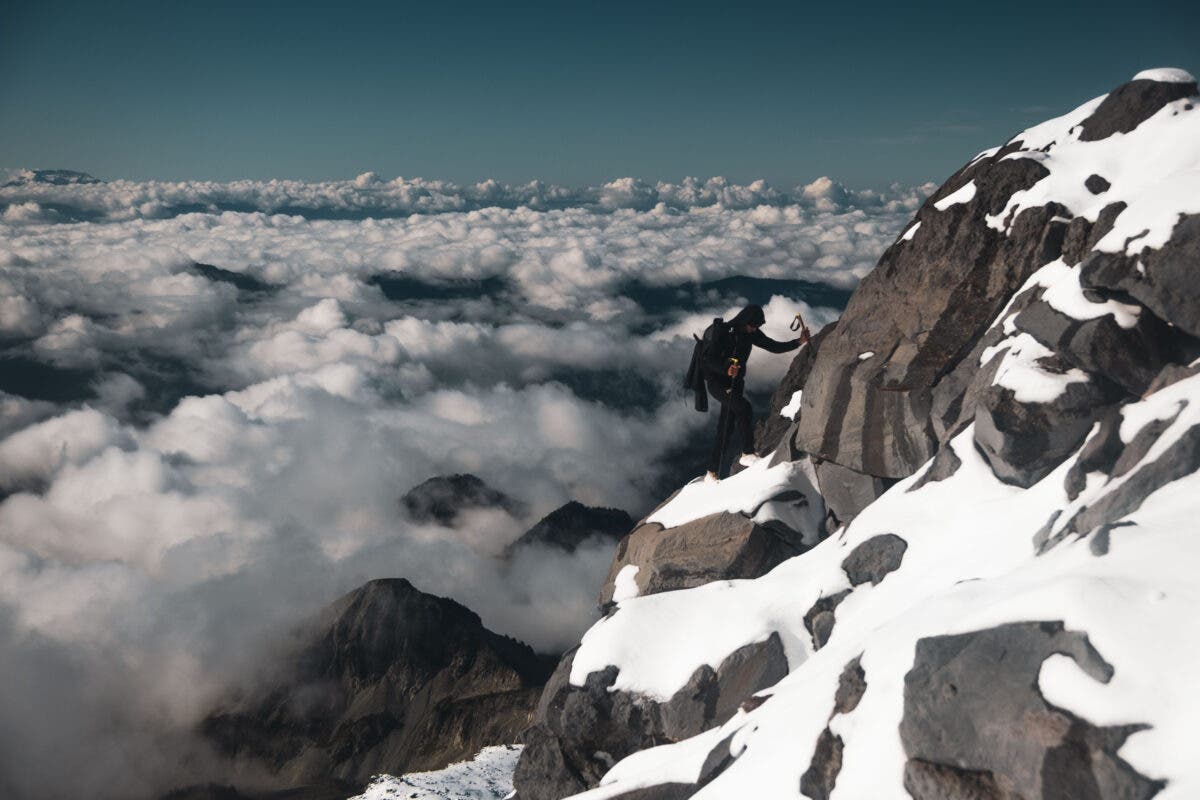 Jornet scaled Washington’s notorious Mount Rainier at the end of his project. (Photo: Nick-Danielson – States of Elevation )
Jornet scaled Washington’s notorious Mount Rainier at the end of his project. (Photo: Nick-Danielson – States of Elevation )
Take inspiration from Jornet’s accomplishment, but apply his training method with caution.
Only a near-superhuman with two decades of ultra-endurance could ride that much after barely taking their bike outside for a year.
Indeed, Jornet told CyclingWeekly, he’d done no specific training.
Jornet’s minimal indoor riding had been far from taxing, too. If his Strava uploads are complete, this mountain runner was pedaling low intensity for only two-to-three hours per week
Any “normies” following a similar no-prep approach would be on the fast track to the physiotherapist.
Muscles, ligaments, and tendons would end up as ruined as the undercarriage.
That said, Jornet is no normal athlete.
“The rules” don’t apply when you’ve got the GOAT gene and have been training 20 hours per week for years.
In 2025 alone, Jornet already cruised around a mountain marathon in three hours, placed second behind only Jim Walmsley at a 75-mile race in Italy, and set the sixth fastest time on record when he ran to third at the Western States 100 miler.
His enormous engine and freakish resilience saved him from overuse.
“The body, it’s crazy how much it adapts to things. It felt rough in the beginning, my body was tight, it was fighting all the things – the effort, the altitude, the dry air, everything,” Jornet said. “Then after a week it stopped fighting and started to adapt.
“When I was doing the Norman’s [13 14,000-foot summits in Sierra Nevada – ed] I slept for one and a half hours in 56 hours, and I didn’t feel that tired. I felt like my body was taking it and saying ‘that’s cool.’”
The fueling: Less gels, more olive oil
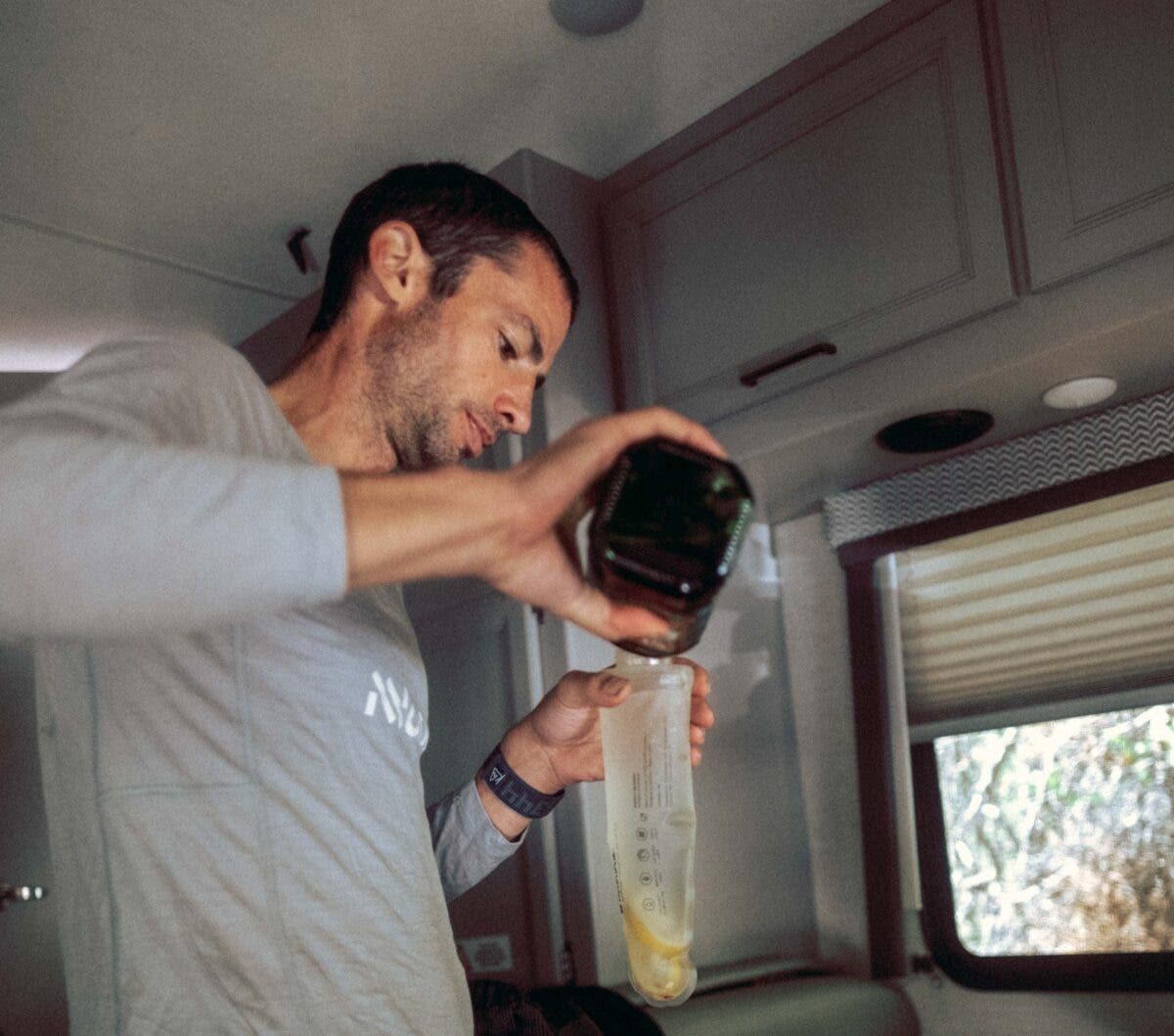 The “olive oil shot” set tongues wagging across social media. (Photo: Nick Danielson — States of Elevation)
The “olive oil shot” set tongues wagging across social media. (Photo: Nick Danielson — States of Elevation)
Jornet used decades of endurance to power his way around the “14ers,” and he used decades of nutritional experimentation to fuel it, too
He relied on a 50 percent carb / 50 percent fat strategy he’d dialed in over thousands of hours of low-intensity activity.
The vegetarian athlete munched on a moving feast of cookies, candies, and a custom mash-up of avocado, coconut oil, nuts, dates, and banana. Cheese or Nutella sandwiches, and peanut M&Ms, became his go-to trail-side snacks.
It was whole-food, fat-heavy feeding that butts up against the hype for high-carb.
Indeed, pounding thousands of calories of pure CHO only applies when the engine burns hot. It was redundant and unsustainable for Jornet’s month-long 100bpm bubble.
“During a race, for example, I would eat a gel every 20 minutes or 30 minutes. Here, it was very rare I would eat a gel,” Jornet said.
And on the topic of quick energy hits – Jornet addressed those Instagram reels of him slugging shots of olive oil.
“A picture is always taken out of context,” Jornet told CyclingWeekly. “Olive oil and coconut oil have more calorie density. I’m spending 9,000 calories per day. I need to replace all of those.
“I put a bit of olive oil or coconut oil in the water as a way to get more.”
Total calories – and calorie density – are king for such ultra-endurance escapades.
But before you go guzzling olive oil during the Unbound XL or The Traka, make sure your gut can tolerate it first. The porta-potties will thank you later.


Dining and Cooking